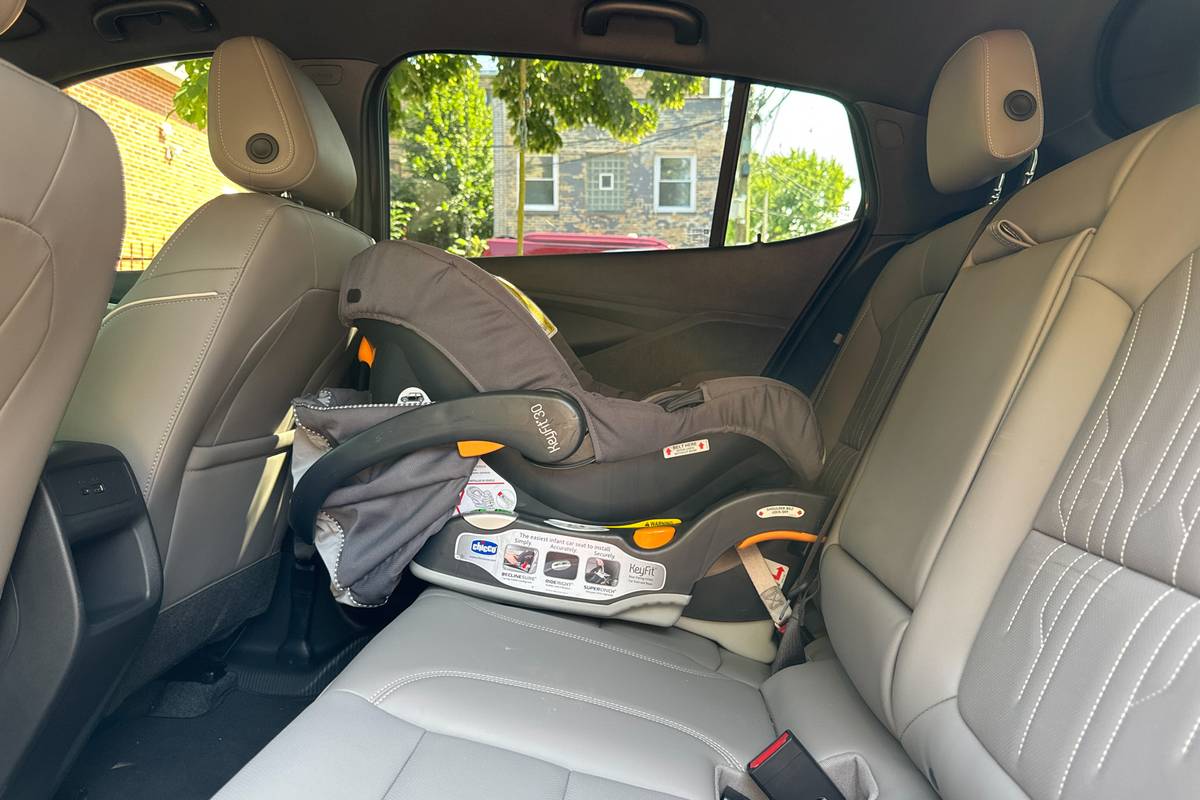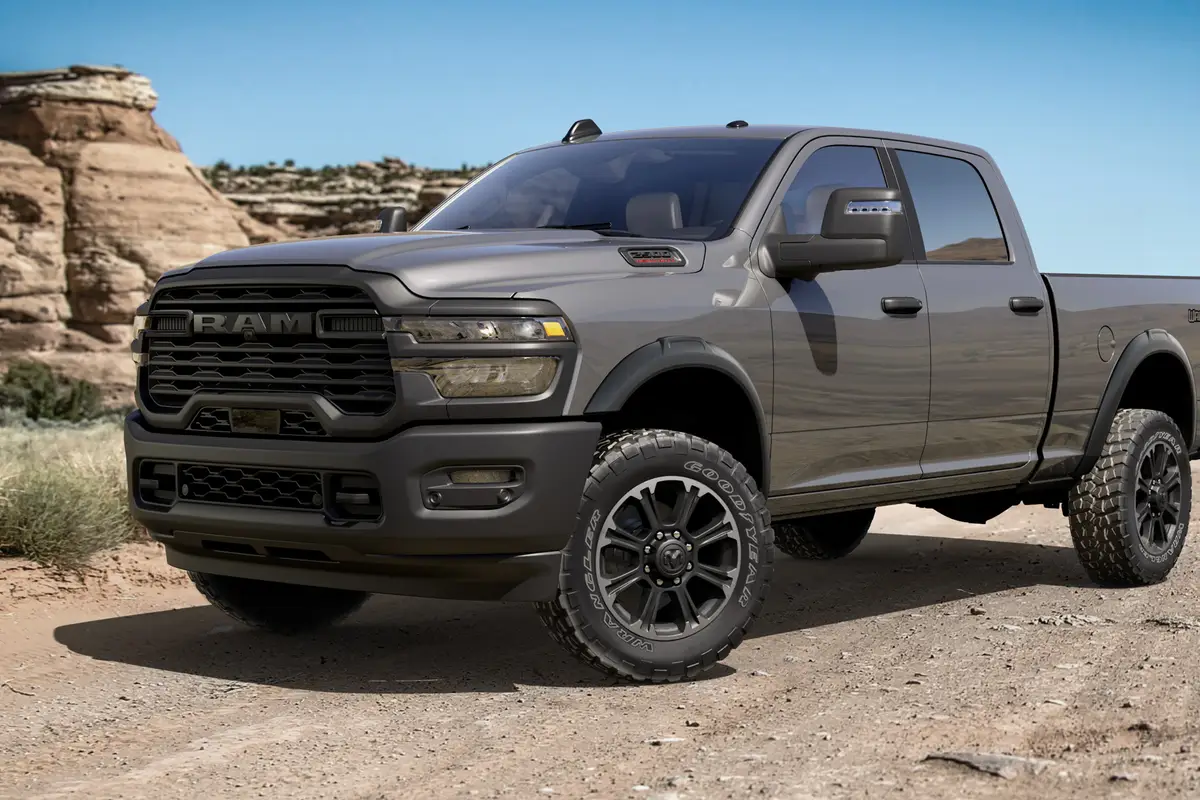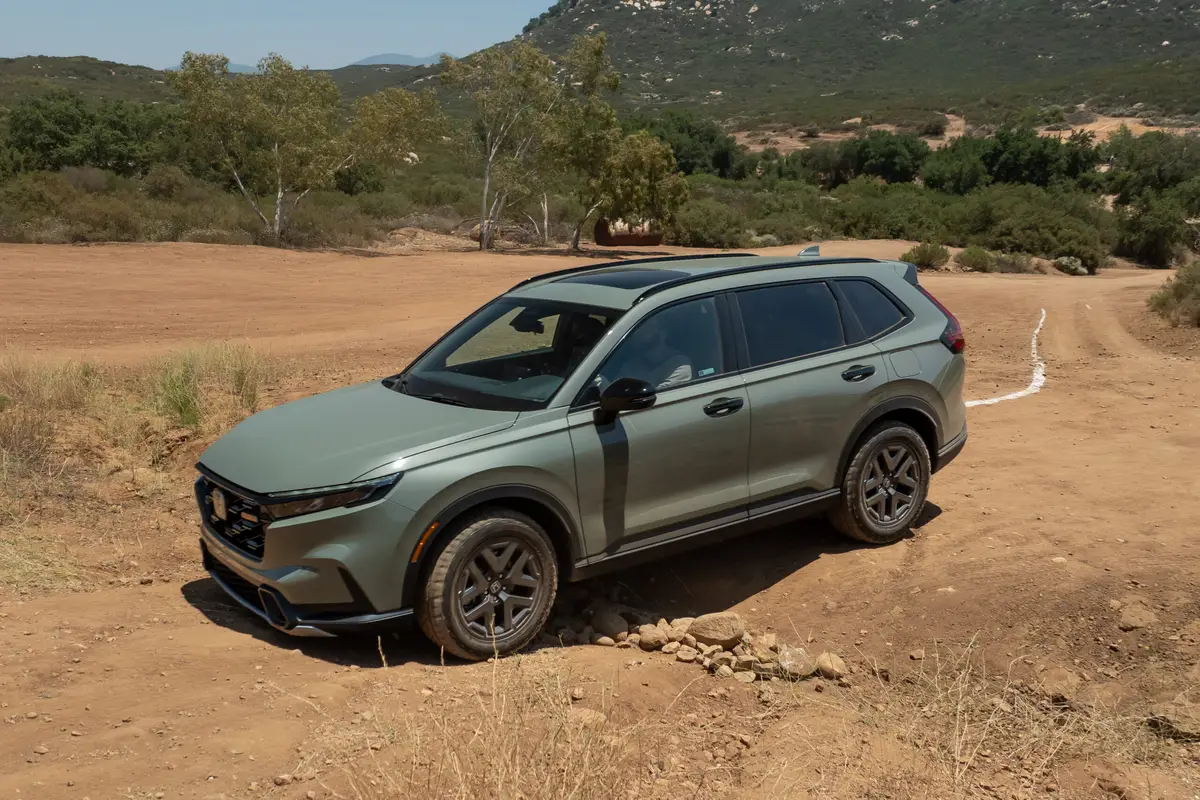Boston.com's view
It was some time in coming, but the folks at Toyota have realized that if they want to break into the big truck market in North America, they need a V8-powered truck in their stable.
With the new Tundra, they have produced just such a truck, a truck that can roam the range with the big Chevys and Fords and Dodges — out where the big dogs eat.
The Tundra, all full of horsepower and torque, is a big step up from the Tacoma (a fine, but small truck) and the six-cylinder T100 (which should have been this truck in the first place).
The Tundra is the first Japanese entry into the North American big truck market, which is exploding particularly with four-door, five- and six-passenger trucks.
And given that big, V8 pickups are virtually unique to North America, it comes as no surprise that, when you look at the Tundra, you see hints of domestic trucks: the rounded roofline and fenders reminiscent of Dodge; the grill, pure Ford F-series; the pickup bed more angular, with chrome accents above the wheel wells, looking like a Chevy.
The market at which the Tundra is aimed — faithful to brand and country — has long been the core of the “buy-American” faction of US customers. To help gain access, Toyota is building the Tundra in Princeton, Ind., where it hopes to produce 100,000 of the trucks in the first year and 50,000 new SUVs, built on the same platform, in the near future.
You can tell you are dealing with a serious truck simply by opening and closing the doors, front and rear. They are heavy and slam with a thud that gives confidence. Getting in and out, particularly with optional running boards, is easy. The smaller rear doors open back and past a right angle to make reaching the rear seat easier.
Inside, the seats are very firm. A 60-40 bench or buckets are options in front, while the rear is a low, vertical-back bench. With benches front and rear, this is billed as a six-passenger truck, but adults would not want to do long trips in the back seat because leg room is tight. Three kids would be fine back there, though the straight-backed seats might prove uncomfortable on long trips even for them.
Most controls are housed in a warped-oval panel in the middle of the dash, and everything about them is large: large buttons, dials, even the digital numbers on the clock and radio are big. No squinting needed to see which button or dial you are reaching for, or what station you’ve dialed up on the radio.
There are pockets in all four doors for maps and other storage, a sunglasses holder that drops from center ceiling at the windshield, and a console that folds down and divides the front seat in the bench seat model. It has two cupholders up front and its lid opens to reveal even more storage space.
Get the Tundra out on smooth roads and the ride is superb; only the fact you are sitting so high keeps reminding you that you are in a truck. Even on bumps, where the truck gives you a gentle awareness of what is going on, the ride is smooth and not at all jarring.
In a wonderful blend of past and present, Toyota has used suspension control arms and coil springs up front, and leaf springs in the rear, all bolstered by gas shocks.
Cruise at highway commuter speed and what is striking is the quiet. Feed it gas to pass and the V8 gives off a smooth and throaty purr, but no big roar. This is as quiet and smooth a truck as I have ever driven, almost luxury sedan-like in ride.
It will carry 2,000 pounds of payload and with an optional hitch has a top towing capacity of 7,200 pounds. And though the four-door Access Cab model comes with a bed that’s only 6.5 feet long, it is wide enough to take a sheet of plywood.
Offroad, the 315 lbs./ft. of torque make it formidable. Crawling uphill in low-range, four-wheel drive or using the engine to brake on steep downgrades lets this torque do the talking.
On a steep gravel grade, the engine is s quiet you can hear and feel the tires digging for purchase outside. This adds to a wonderful sense of control.
At the heart of this contrapuntal combination of power and quiet is a 4.7 liter, dual overhead cam, 32-valve engine. It’s a variation of the engines found in Lexus and the Toyota Land Cruiser (it trails the latter beast in torque by only 5 lbs./ft.). This version has an iron block and aluminum heads and powers the Tundra from 0-60 in just under 8 seconds, pretty quick for a big truck.
It cruises at 80 at just 2,400 rpms and is not the gas-guzzler that some other big trucks are. With a combination of highway commuting (including much time spent in a couple of traffic jams), running about town, and playing briefly in the woods, it got just under 17 miles per gallon.
The Tundra is available in two-door (with 8-foot bed) and four-door (6.5-foot bed) models. You can also choose between the V8 and a V6 engine, though the latter would seem to defeat the purpose of this truck.
After all, it is the V8 that has successfully put Toyota trucks out there where the big dogs eat, so chow down.
Nice touches:
— The two-panel window visors that separate and let you block the sun coming in the side window and the usual spot atop the windshield at the same time. No more adjusting as the angle of the sun keeps changing each time you round a bend.
— The bright cargo lights that illuminate the bed for a brief period after you turn the truck off.
Annoyances:
— Toyota should find a way to give the Access Cab an 8-foot bed. A big truck needs to be a big truck.
— Why is 5-speed manual transmission an option only in the V-6?
SIDEBAR:
The numbers
Base price: $25,585
Price as tested: $29,693
Horsepower/Torque: 245 hp/315 lbs.-ft.
Wheelbase/Overall length: 128.3 inches/217.5 inches
Width/Height: 75.2 inches/70.5 inches
Curb weight: 4518 lbs.
Seating: 6 passengers
SOURCE: Manufacturer
Latest news



